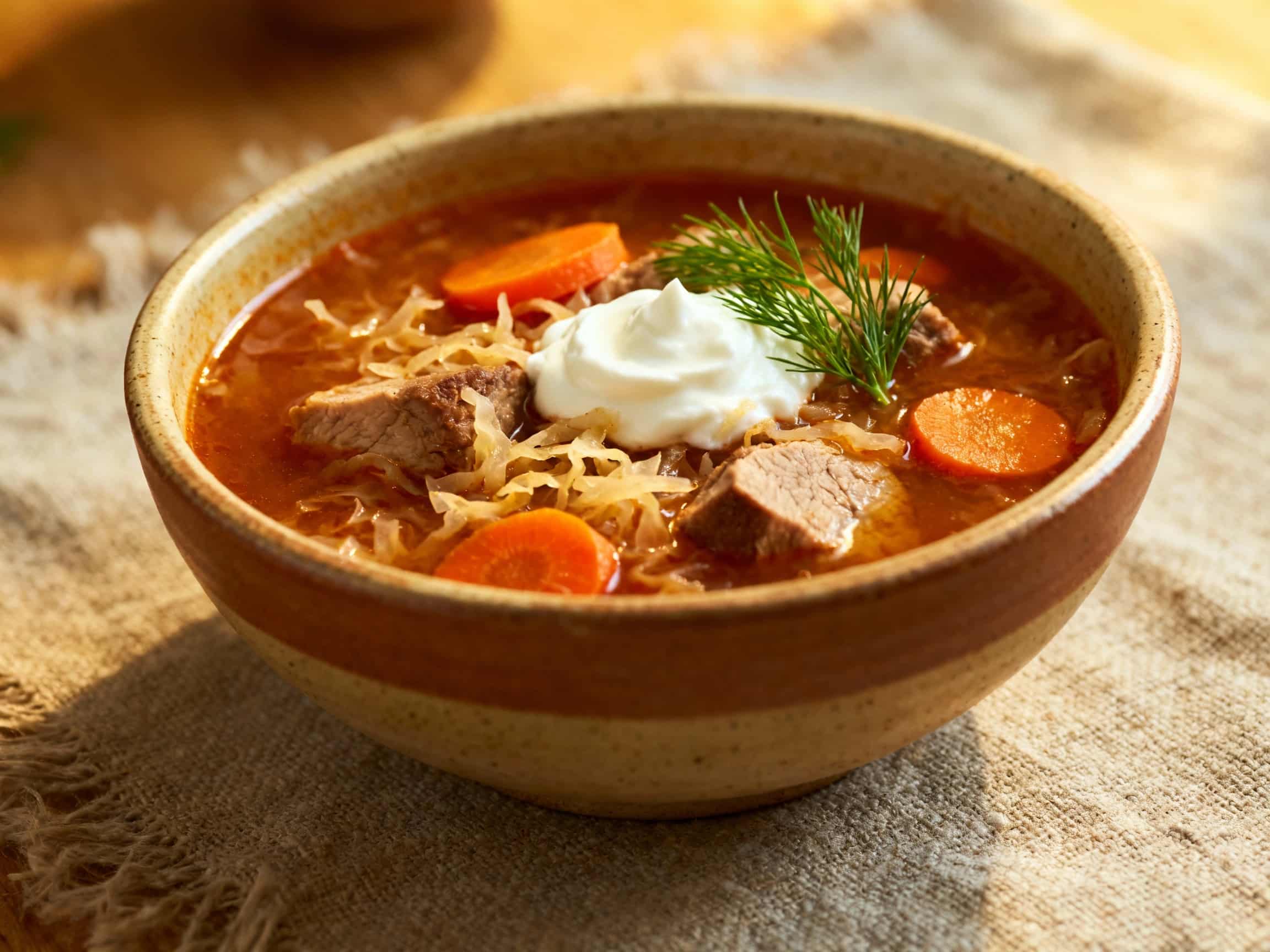
Kapustniak
Капусняк
- Country
- Ukraine
- Region
- Galicia
- Recipes
- 0 Recipes
Dish information
Kapustniak, a robust and flavorful sauerkraut soup, is a cornerstone of Ukrainian and Slavic cuisine, deeply rooted in the historical gastronomic landscape of Galicia. This region, known for its hearty and comforting dishes, provided the perfect environment for Kapustniak to flourish, where fermentation and preserved foods were essential for enduring long winters. The soup's primary ingredient, sauerkraut (fermented cabbage), not only imparts a distinctive sour tang but also carries significant historical weight as a vital source of vitamins during colder months before modern refrigeration. The preparation of Kapustniak often involves slow-cooking sauerkraut with various cuts of pork, such as ribs or bacon, alongside root vegetables like carrots and potatoes, and grains like millet or barley. This combination creates a deeply satisfying and nourishing meal. Its historical significance is tied to its role as a sustenance dish for peasants and farmers, providing energy for arduous labor. Over centuries, Kapustniak has evolved from a simple peasant fare into a celebrated national dish, gracing tables in both humble homes and more elaborate settings. Culinary traditions surrounding Kapustniak often emphasize the importance of a long, slow simmer to allow the flavors to meld and deepen, a technique passed down through generations. It represents the resilience and resourcefulness of Ukrainian cooking, transforming readily available ingredients into a dish of profound flavor and cultural resonance.
Timeline
Fermented cabbage (sauerkraut) becomes widely used in Central and Eastern Europe as a crucial winter food source.
The concept of hearty, long-simmered soups with pickled vegetables, a precursor to modern Kapustniak, gains popularity in Slavic regions.
Kapustniak, as a distinctly recognized dish with sauerkraut and pork, solidifies its place in Ukrainian and Galician culinary traditions.
Kapustniak provides vital nourishment during periods of conflict and scarcity, reinforcing its role as a resilient and essential dish.
Related recipes
0 recipesWe'll add related recipes for this dish soon.